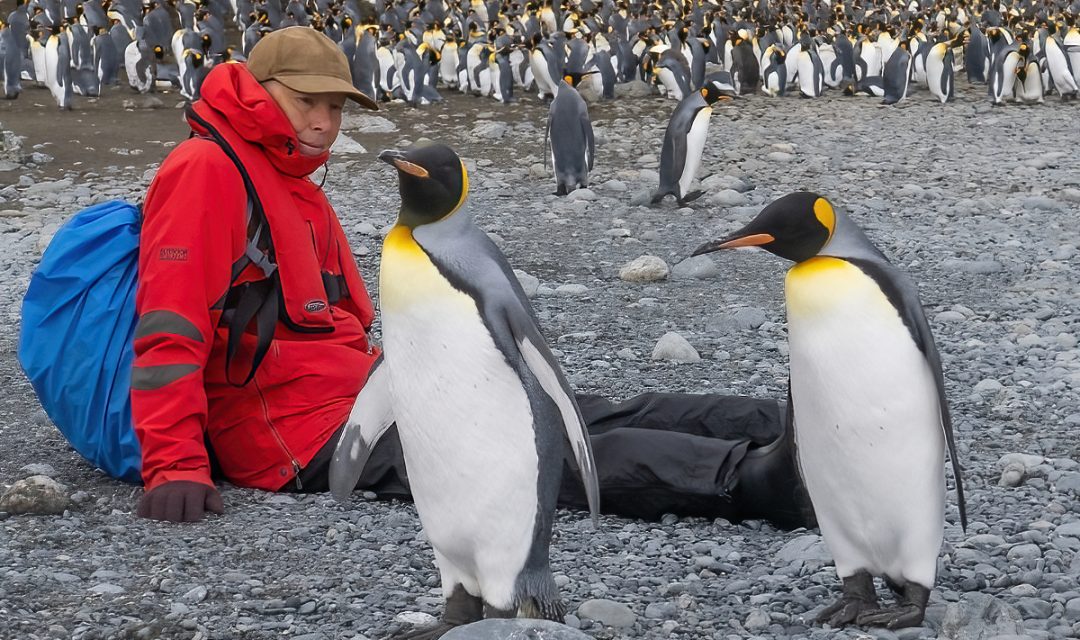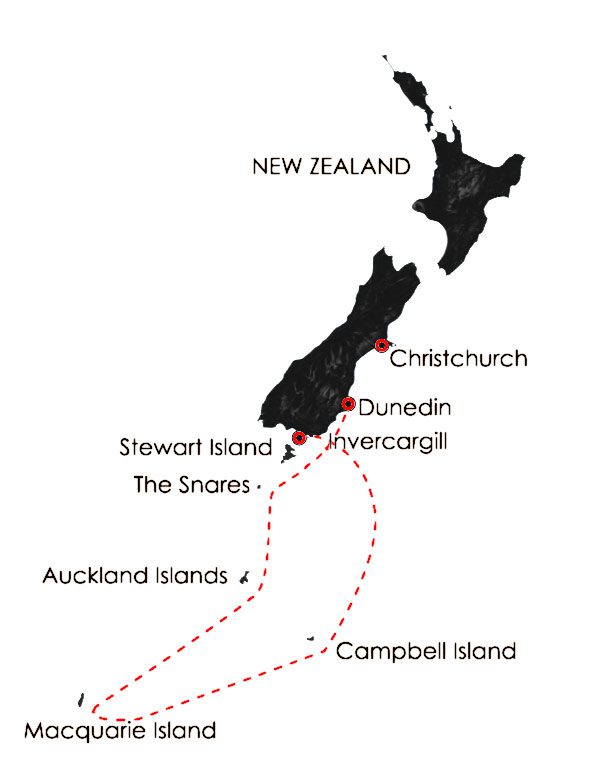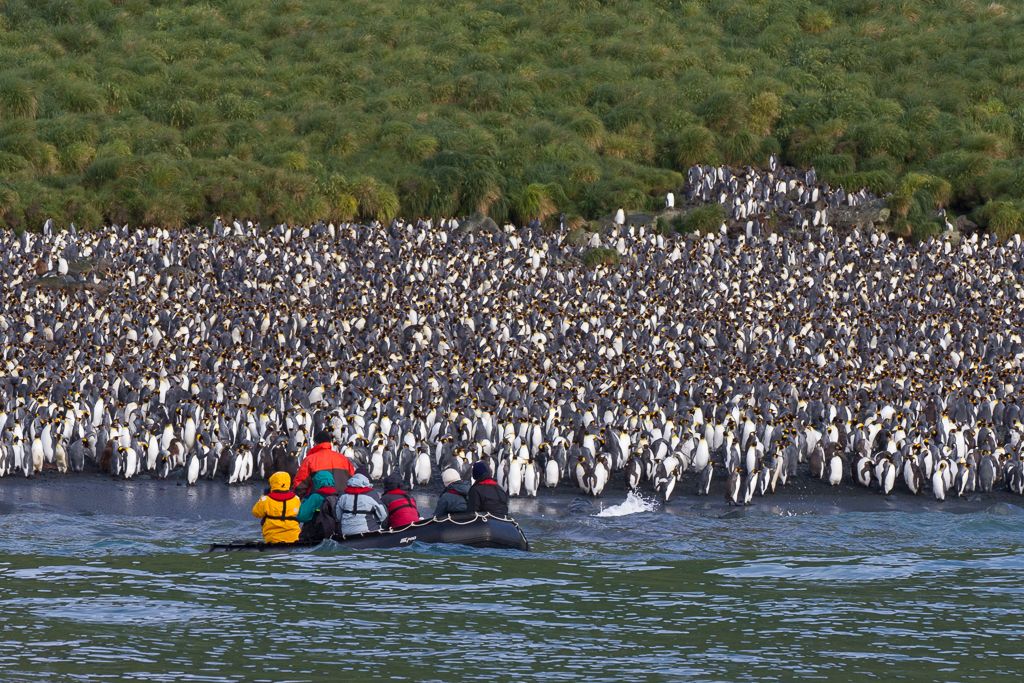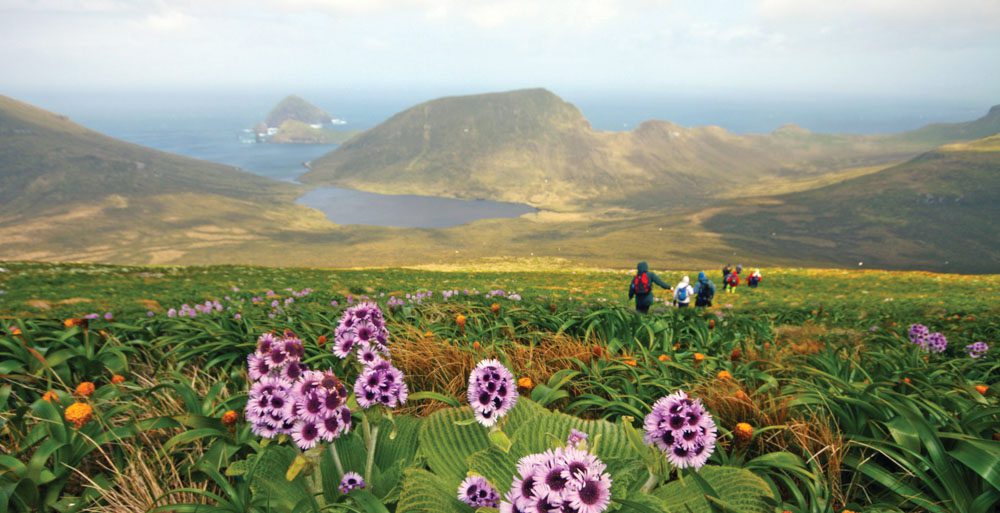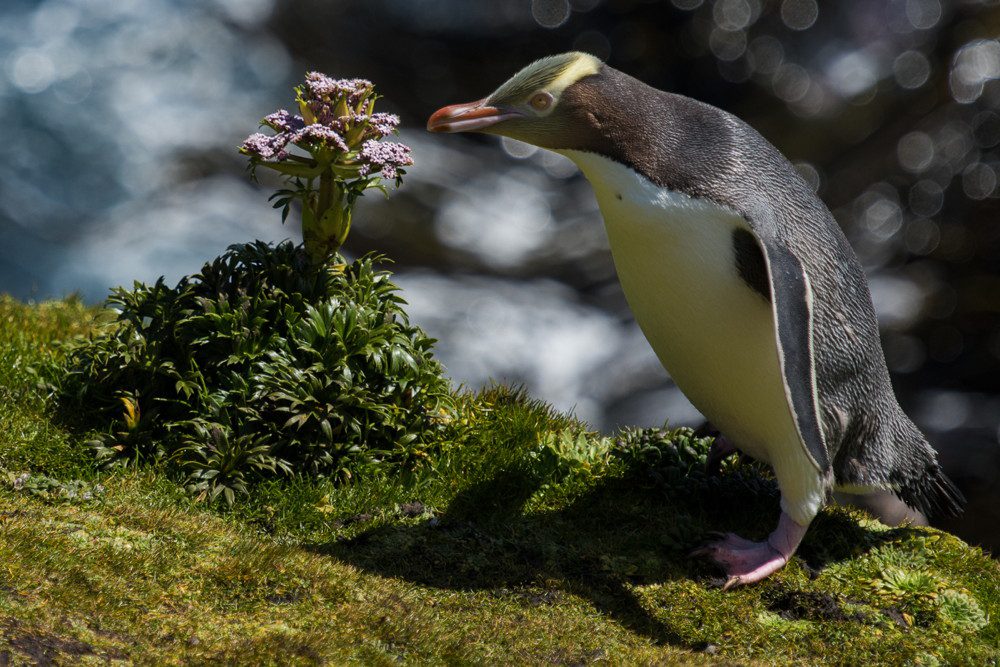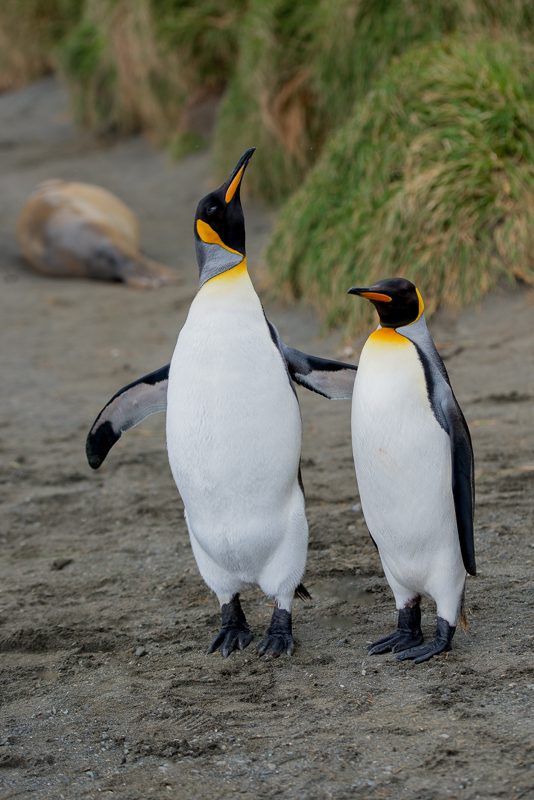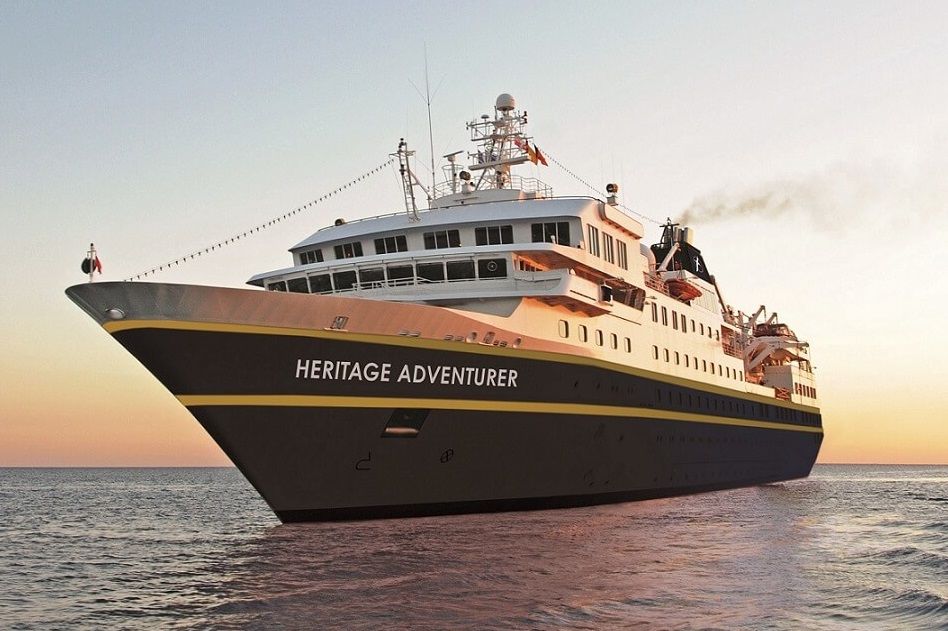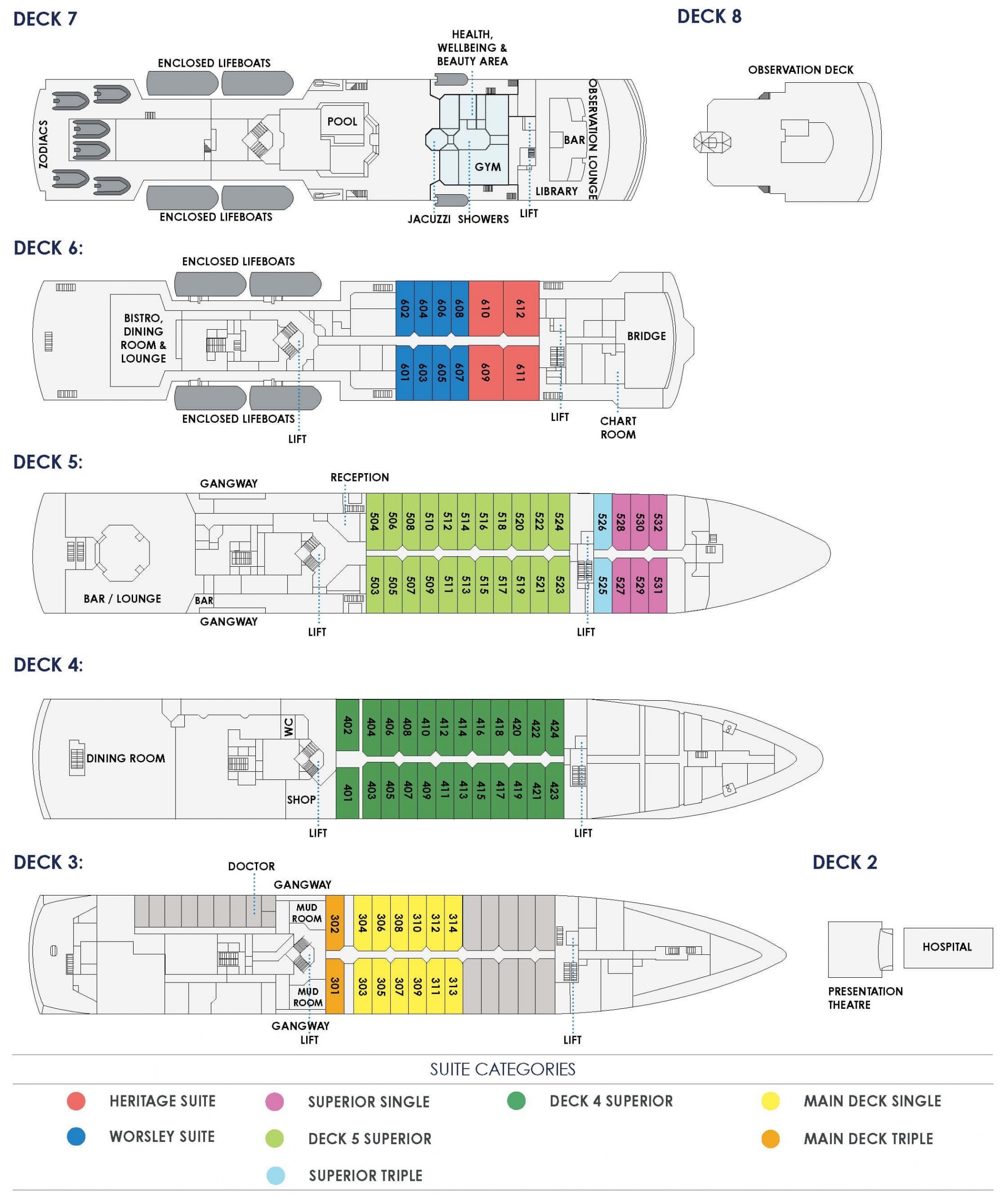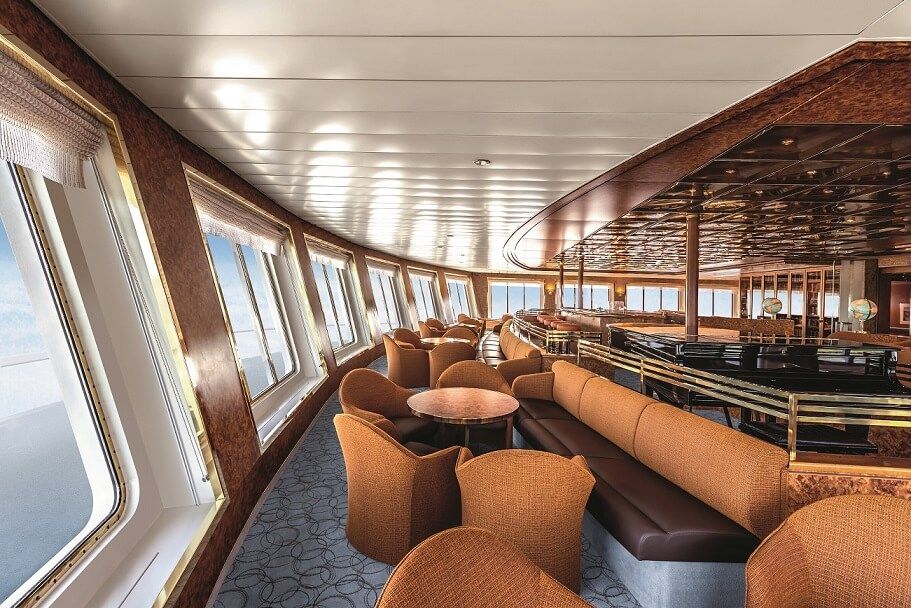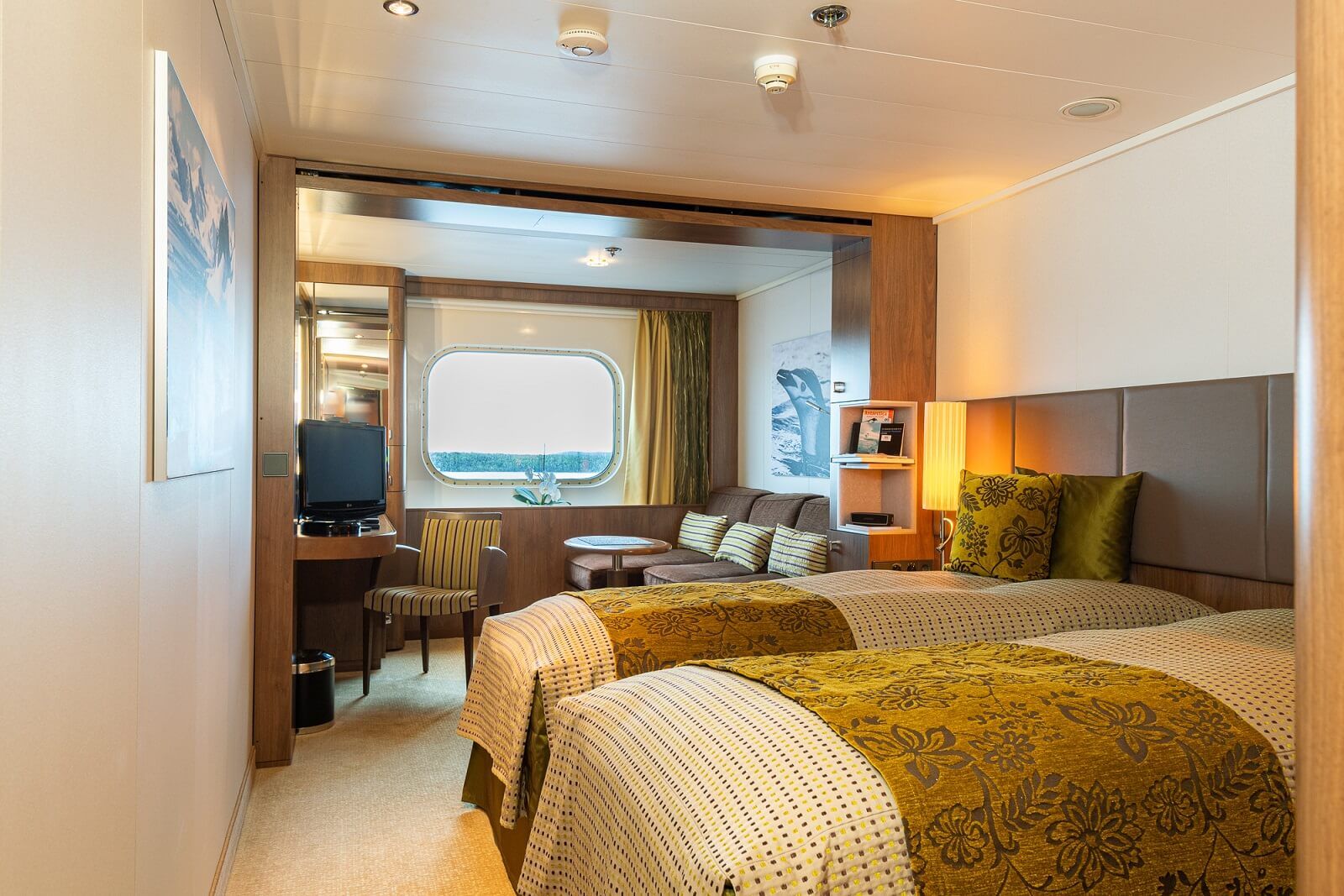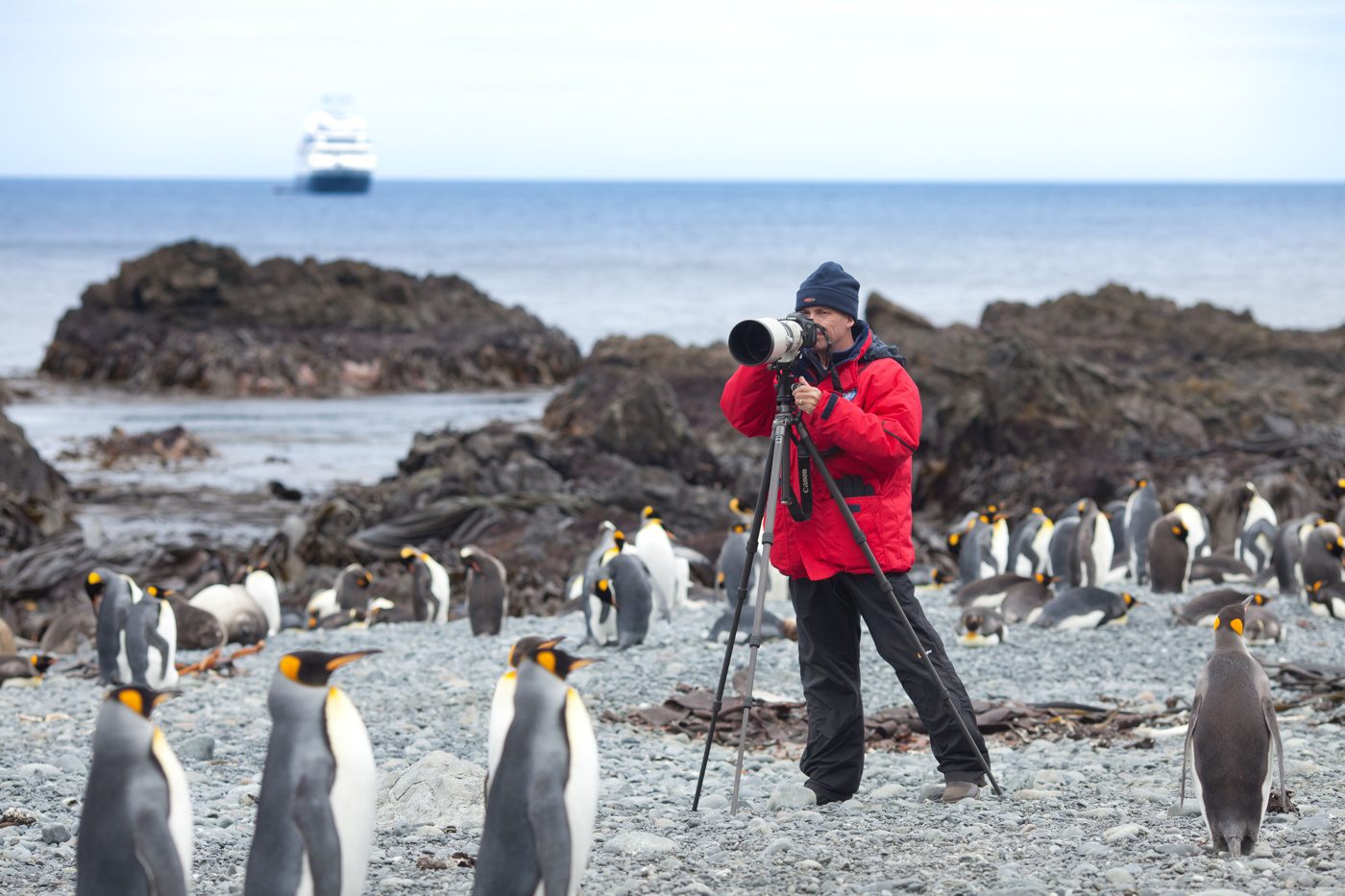23rd of November to 4th of December 2022
FULLY BOOKED!
Join us on this 13-day photographic adventure starting in Dunedin, NZ. We travel by an expedition ship, heading south and exploring some of New Zealand’s amazing subantarctic islands, reaching as far south as Australia’s Macquarie Island. We return to Invercargill on the southern tip of NZ’s South Island.
This is without doubt one of the most inspirational and informative journeys or expeditions into the Southern Ocean ecosystem that one can make anywhere in the world. Long recognised for their rich biodiversity, the Subantarctic Islands lying to the south of New Zealand are UNESCO World Heritage sites. This places them in a select group of only 180 natural sites that have been designated as ‘the most important and significant natural habitats' on the planet. They are also afforded the highest conservation status and protection by the Australian and New Zealand governments and access to these islands is by permit only. On this expedition we offer you the unique chance to explore, photograph and understand these wonderful places in the company of some of the most knowledgeable and passionate guides.
We will be exploring rarely-visited wilderness hotspots, photographing wildlife (largely birds but also some mammals), plants, and stunning landscapes.
We will have a maximum of 9 photographers on this expedition, led by professional nature photographers and tutor, Michael Snedic
Photographers of all experience levels are welcome. Michael will be guiding you and supporting your photography during the expedition. Not just in taking photographs in the field, but also in reviewing and refining your photos along the way.
Contact Michael Snedic directly
on +61 408 941 965
Your photography leader and tutor - Michael Snedic
On this expedition you will have access every day to a professional nature photographer and instructor. Michael is there to help you photograph the stunning scenery and wildlife we will encounter. Michael will be conducting a series of classes throughout the voyage, as well as being on-hand throughout the outings.
As a full-time professional, Michael is an accredited member of the Australian Institute of Professional Photographers (AIPP). As well as being a professional wildlife and nature photographer, he is an experienced photographic tutor (18 years)Michael is an experienced (25 years) and widely published wildlife and nature photographer, writer and tutor. His articles and images have featured in many magazines, calendars, diaries, books, brochures, billboards and many other publications.
He is the author of two books on Australian wildlife, and is a Nikon School tutor for Australia. Michael regularly presents audio-visual presentations at photographic organisations, and has been conducting photography workshops and tours across Australia for many years. He also conducts photography tours to Africa, Antarctica, the Arctic (Svalbard and the Russian Far East) and Sri Lanka. Michael loves sharing his photographic knowledge and passion with workshop participants, helping them improve their photographic skills.
Itinerary:
Day 1: Queenstown
Passengers should make their way to the designated hotel where we will spend the first night of the expedition. This evening there will be an informal get-together at the hotel for dinner; an excellent opportunity to meet fellow adventurers on your voyage and some of our expedition team.
Day 2: Port of Bluff
Today we enjoy breakfast in the hotel restaurant and have the morning free to explore Queenstown before returning to the hotel for lunch and departing for the Port of Bluff to embark your ship. You will have time to settle into your cabin and familarise yourself with the ship; we will also take the opportunity to conduct a number of safety briefings. You are invited to join the expedition team in the Observation Lounge and up on the Observation Deck as we set our course to The Snares and our adventure begins.
Day 3: The Snares – North East Island
The closest Subantarctic Islands to New Zealand, they were appropriately called The Snares as they were once considered a hazard for sailing ships. Comprising of two main islands and a group of five islands called the Western Chain; they are uninhabited and enjoy the highest protection as Nature Reserves. It is claimed by some that these islands are home to more nesting seabirds than all of the British Isles together. We plan to arrive early in the morning and, as landings are not permitted, we will Zodiac cruise along the sheltered eastern side of the main island if the weather and sea conditions are suitable. In the sheltered bays, we should see the endemic Snares Crested Penguin, Snares Island Tomtit and Fernbirds. Cape Pigeons, Antarctic Terns and White-fronted Terns are also present in good numbers. There are hundreds of thousands of Sooty Shearwaters nesting on The Snares; the actual number is much debated. The Buller’s Albatross breed here from early January onwards.
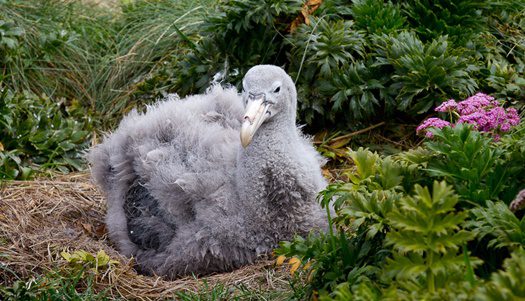
© Meghan Kelly
Days 4: Auckland Islands – Enderby Island
The Auckland Islands group was formed by two volcanoes which erupted some 10-25 million years ago. They have subsequently been eroded and dissected by glaciation creating the archipelago as we know it today. Enderby Island is one of the most beautiful islands in this group and is named after the distinguished shipping family.
This northern most island in the archipelago is an outstanding wildlife and birding location and is relatively easy to land on and explore on foot. The island was cleared of all introduced animals (pests) in 1994 and both birds and the vegetation, especially the herbaceous plants, are recovering both in numbers and diversity.
Our plan is to land at Sandy Bay, one of three breeding areas in the Auckland Islands for the Hooker’s or New Zealand Sea Lion, a rare member of the seal family. Beachmaster bulls gather on the beach, defending their harems from younger (ambitious) males, to mate with the cows shortly after they have given birth to a single pup. During our day ashore there will be several options, some longer walks, some shorter walks and time to spend just sitting and enjoying the wildlife. The walking is relatively easy, a boardwalk traverses the island to the dramatic western cliffs, from there we follow the coast and circumnavigate the island. Birds that we are likely to encounter include the following species: Southern Royal Albatross, Northern Giant Petrel, Auckland Island Shag, Auckland Island Flightless Teal, Auckland Island Banded Dotterel, Auckland Island Tomtit, Bellbird, Pipit, Red-crowned Parakeet, Yellow-eyed Penguin and Light-mantled Sooty Albatross. There is also a very good chance of seeing the Subantarctic Snipe.
Day 5: Auckland Islands – Carnley Harbour
In the south of the archipelago there is a very large sheltered harbour rich in human history including shipwrecks, treasure hunters, Coastwatchers and, of course, scientific parties. We plan to arrive early morning from our anchorage at Enderby Island. We enter the harbour through the eastern entrance which is guarded on both sides by dramatic cliffs and rugged, tussock-covered hills. Our activities here today are totally weather dependent. We have a number of options. The climb to the South West Cape to visit the Shy Mollymawk colony provides magnificent views in all directions, especially over the western entrance to Carnley Harbour, Adams Island and Western Harbour. There is also the Tagua Bay Coastwatcher’s hut and lookout (the former is derelict) which was occupied during the Second World War. We could also visit Epigwatt and the remains of the ‘Grafton’ which was wrecked here in 1864. All five men aboard survived and lived here for 18 months before sailing their modified dinghy to New Zealand to get help. Two of the survivors wrote books about their ordeal. Their first-hand accounts tell us a lot about their time here. Alternatively we may visit the Erlagan clearing where a German Merchant ship cut firewood to fire its boilers after slipping its moorings in Dunedin on the eve of the Second World War. Another potential site is Camp Cove where we can see the remains of the castaway depots established and maintained by the New Zealand government between the 1860s and early 1900s. Later this afternoon we depart for Macquarie Island.
Day 6: At Sea
As we make our way south through the Furious Fifties, also known as the Albatross latitudes, the birding, especially south of the Auckland Islands, should be good. We will have a series of lectures on the biology and history of the Subantarctic Islands. We will also prepare you for our visit to Macquarie Island. Species that we may see include the Wandering Albatross, Royal Albatross, Black-browed Albatross, Light-mantled Sooty Albatross, Salvin’s Albatross, Grey-headed Albatross, Northern and Southern Giant Petrel, Sooty Shearwater and Little Shearwater. There should be plenty of prions including Fairy, Fulmar and Antarctic, identifying them is not easy – but we should get some great views. Other species to be on the lookout for include the Soft-plumaged Petrel, Mottled Petrel, White-headed Petrel, Grey-faced Petrel, White-chinned Petrel, Grey-backed Storm-petrel, Wilson’s Storm-petrel and Black- bellied Storm-petrel.
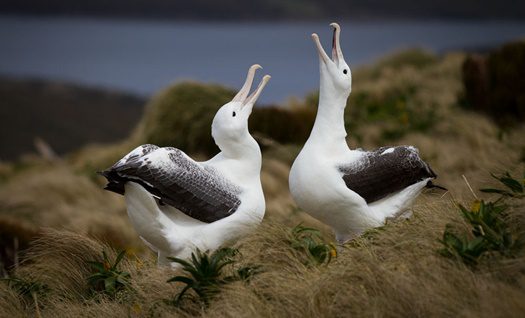
© Katya Ovsyanikova
Days 7 to 8: Macquarie Island
The great Australian Antarctic Explorer Sir Douglas Mawson once called Macquarie Island “One of the wonder spots of the world”. You are about to discover why as we spend two days exploring this amazing Island. It was one of the first of the Subantarctic Islands to obtain World Heritage Status and that was largely due to its unique geology. It is one of the few places on earth where mid- ocean crustal rocks are exposed at the surface due to the collision of the Australian and Pacific Plates. Macca, as it is affectionately known by its resident ranger population, was discovered in 1810 and was soon ravaged by sealers who introduced various animals including rats, mice, cats and rabbits. The native bird population was virtually eliminated and plants destroyed. The Tasmanian National Parks and Wildlife Service, who administer the island, embarked on a very ambitious 7-year eradication programme resulting in the island earning pest-free status in 2014. Both the birds and plants have responded and it is amazing to witness the regeneration and the increase in the number of birds.
Macquarie Island is home to four species of penguin, Kings, Royals, Gentoo and Rockhopper, with the Royal Penguin occurring nowhere else in the world. During our visit we will land at two sites (subject of course to weather and sea conditions) and you will get a chance to observe and photograph all four species, although the Rockhopper is much harder to capture than the others. Macquarie also has a large population of Southern Elephant Seals. Pups are born in October and weaned in November when the breeding adults return to sea. The weaners and sub adults lie around on the beaches. The weaners go to sea sometime in January, running the gauntlet of Orcas or Killer Whales waiting offshore. We also plan a landing at the Australian Antarctic Research Base at Buckles Bay where you will be able to meet with scientists and base staff. The original base was established in 1947 and the island has been ‘manned’ since then. It is one of the longest continuously occupied bases in the Subantarctic.
Day 9: At Sea
There will be briefings and lectures on Campbell Island in preparation for our visit there and opportunities for pelagic birding and/or simply relaxing.

© Katya Ovsyanikova
Day 10: Campbell Island – Perseverance Harbour
We have all of today to explore Campbell Island, New Zealand’s southernmost Subantarctic territory. Its history is as rich and varied as the other islands we have visited. Discovered in 1810 (by the same sealing captain who discovered Macquarie Island) it too was soon occupied by sealers who introduced rats and cats.
In 1895 the New Zealand government advertised the island as a pastoral lease. The lease was taken up by an entrepreneurial New Zealand sheep farmer who stocked the island with sheep and cattle. The farming practices, which included burning the scrub, modified the island considerably. The farming lasted until 1934 when it was abandoned. Coastwatchers were stationed on the island during the war, at the end of the war the station was taken over by the New Zealand Metrological service and they maintained a manned weather/ research station on the island until 1995.
In the early 1970s the island was fenced in half and stock was removed off the northern half. The impacts of the remaining animals were monitored and they were all eventually removed in 1990. The vegetation recovered quickly and the cats died out naturally. In a very ambitious (and never before attempted on such a large scale) eradication programme the New Zealand Department of Conservation successfully removed the rats. With the island declared predator free in 2003, the way was clear to reintroduce the endangered Campbell Island Flightless Teal, which had been rediscovered
on an offshore island in 1975. Snipe, which were formerly unknown from the island but were discovered on another offshore island, recolonised the islands themselves. The vegetation which the great English botanist Sir Joseph Hooker described in 1841 as having a “Flora display second to none outside the tropics” is flourishing and is nothing short of spectacular.
We will offer a number of options to explore the island. There will be extended walks to Northwest Bay and possibly Mt Honey. There will also be an easier walk to the Col Lyall Saddle. All of these options will allow you the opportunity and time to enjoy the Southern Royal Albatross which nest here in large numbers. We also visit areas of the island which contain outstanding examples of the megaherbs for which the island is renowned.
Day 11: At Sea
At sea en route to the Port of Bluff, take the opportunity to relax and reflect on an amazing experience. We will recap the highlights of our expedition and enjoy a farewell dinner tonight as we complete the last few miles of our journey.
Day 12: Invercargill/Queenstown
Early this morning we will arrive in the Port of Bluff. After a final breakfast and completing Custom formalities we bid farewell to our fellow voyagers and take a complimentary coach transfer to either Invercargill or Queenstown Airports. In case of unexpected delays due to weather and/or port operations we ask you not to book any onward travel until after midday from Invercargill and after 3pm from Queenstown.
Note:
During our voyage, circumstances may make it necessary or desirable to deviate from the proposed itinerary.
This can include poor weather and opportunities for making unplanned excursions. Your Expedition Leader will keep you fully informed. Landings at the Subantarctic Islands of New Zealand are by permit only as administered by the Government of New Zealand. No landings are permitted at The Snares.
Health and Fitness
Anyone in normal good health can join us on this adventure. There are no special fitness requirements, although we will be often climbing into and out of the inflatable Zodiac boats, and walking on shore. Out on the ocean and exposed to the elements it can get quite cold. But it is summer and at times in the sun it can be quite warm.
The ship has a doctor and basic medical facilities on board. If you have specific health concerns or dietary requirements the staff at Heritage will be able to advise you. There’s also a gym on board if you feel the need to get extra workouts. Actually, with the excellent meals provided on these trips it’s not hard to put weight on, so some people like this option.

© Samuel Blanc
Our Ship
The 'Heritage Adventurer' is one of Heritage Expedition's latest additions to its fleet. Although we won’t be seeing ice on this voyage, the ship regularly visits both polar regions and is a very capable vessel. She also has plenty of vantage points for scenic and wildlife photography from all around the ship.
Inclusions
- Photography tuition throughout the expedition with Michael Snedic.
- One night accommodation (with breakfast) in Queenstown.
- Shipboard accommodation.
- All breakfasts, lunches and dinners onboard. Coffee, tea, cocoa available around the clock.
- All zodiac and land excursions.
- Transfer from Queenstown to Port Bluff, and to Invercargill or Queenstown on completion of the voyage.
- Pre- and post-departure materials.
Exclusions
- Airfares and other travel expenses to/from Queenstown/Invercargill.
- Meals in Queenstown (other than as above).
- Passport/visa expenses.
- Personal/travel insurance coverage. Heritage will discuss with you the required insurance coverage (due to the remoteness of our destination).
- Onboard bar, laundry, and telecommunications charges. Internet access is not available onboard.
Prices
The trip is being put together with our partners at Heritage Expeditions in Christchurch, and they take care of the bookings and travel arrangements for us, while Michael runs the photography program.
There are a variety of cabin classes. As usual with these ships your choice of berth/cabin type directly impacts the price of your ticket.
These prices are in US dollars per berth. There’s also an additional charge of US$800 pp to cover landing fees on these protected islands.
| Superior Deck 4 | US$11 450 pp |
| Superior Deck 5 | US$11 950 pp |
| Main deck Single | US$13 775 pp |
| Superior Single | US$14 195 pp |
| Worsley Suite | US$14 795 pp |
| Heritage Suite: | US$21 200 pp |
A 25% deposit is required to secure your place.
NB: PRICE INCLUDES PHOTOGRAPHY TUITION FEE BY MICHAEL SNEDIC ($US1000), WHICH WILL BE INVOICED SEPARATELY
How to book
To reserve your place or just to ask more questions about this photo expedition, please contact Michael either via his Contact Form or by calling +61 408 941 965.






